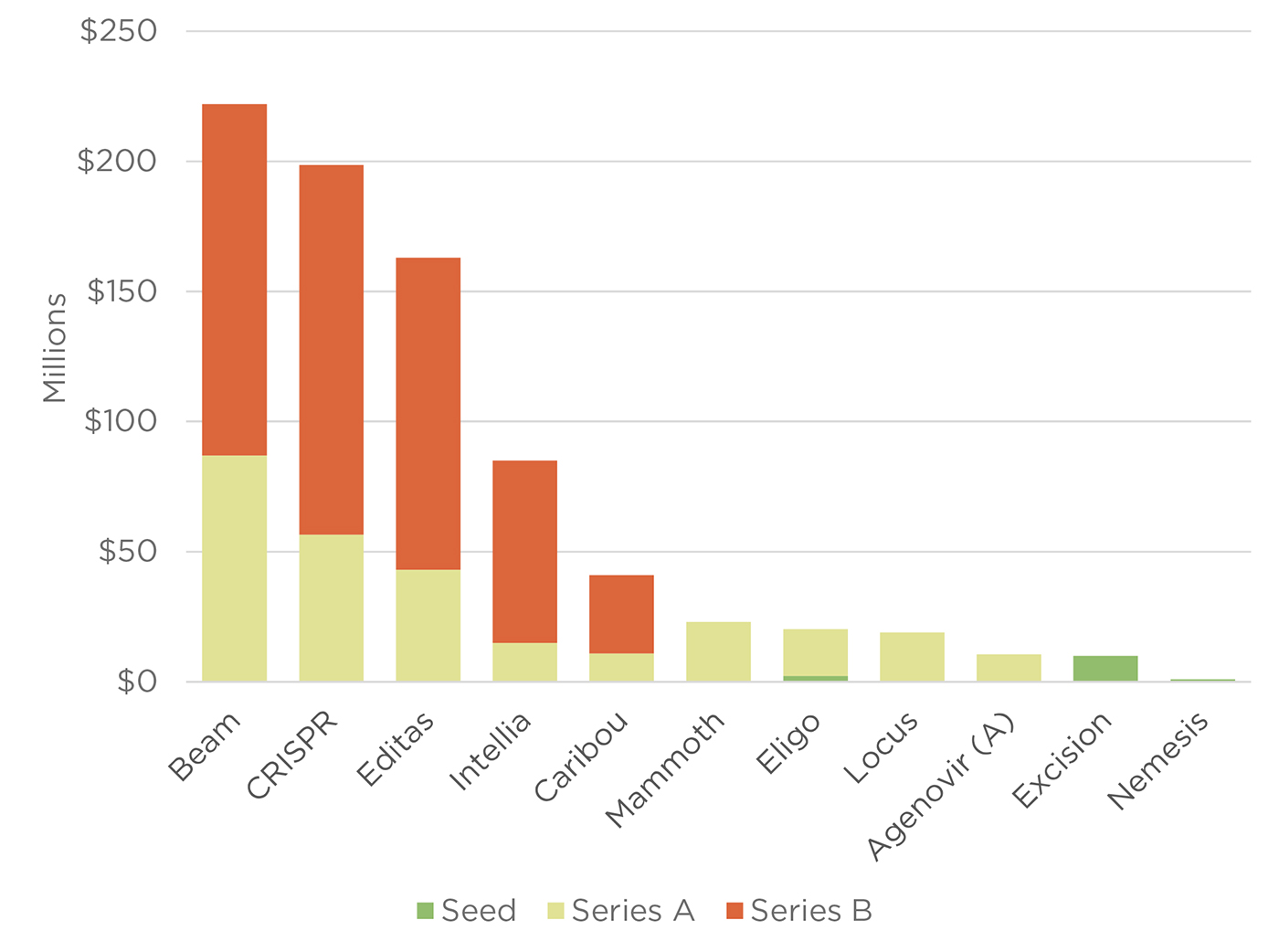Finance
Beam broadens base with $135M B round
How Beam Therapeutics will use latest financing to advance 10 gene editing programs
By raising a $135 million series B round on Wednesday, base editing company Beam Therapeutics has surpassed CRISPR Therapeutics AG (NASDAQ:CRSP) for the most venture money raised by a CRISPR-based company. Added to its May series A, Beam has now raised $222 million and plans to deploy the funds to advance a broader portfolio of gene-editing programs.
New investors include Redmile Group, Cormorant Asset Management, GV, Altitude Life Science Ventures and other undisclosed investors; also participating in the round were existing investors F-Prime Capital, Arch Venture Partners, Either Roads Ventures and Omega Funds.
Figure: CRISPR venture funding
With its $135 million series B round announced Wednesday, Beam Therapeutics surpassed CRISPR Therapeutics AG (NASDAQ:CRSP) for the most venture funding raised by a CRISPR company. CRISPR Therapeutics raised $198.6 million in its series A and B rounds before going on to raise $91 million in an IPO on NASDAQ and a concurrent private placement and at least $331 in follow-ons. (A) Agenovir Corp. was acquired by Vir Biotechnology Inc. in 2018; Source: BCIQ: BioCentury Online Intelligence

Arch’s Robert Nelsen told BioCentury that Beam grew faster than expected, necessitating more funds to ensure Beam could move a portfolio of base editing programs forward and not just a single asset.
Beam CEO John Evans told BioCentury that Beam now has an internal pipeline of 10 gene editing programs, all backed by cellular editing data.
Nelsen said Beam’s founders -- David Liu of Harvard University, Feng Zhang of the Broad Institute of MIT and Harvard and Keith Joung of Massachusetts General Hospital -- plus the capabilities of base editing initially convinced Arch to invest in Beam’s $87 million series A.
“To me, it’s the future of where gene editing can go,” Nelsen said of base editing.
Beam’s base editors comprise an enzymatically deactivated Cas9 or Cas13 nuclease tethered to a deaminase and is directed to target sites using CRISPR guide RNAs (gRNAs). Unlike nuclease-based gene editing technologies like standard CRISPR that cleave DNA, base editors alter single letters of DNA, called point mutations (see “Beaming about Base Changes”).
Evans said the funds will be invested across three areas: Building out Beam’s base editing technologies, broadening its pipeline and readying for the clinic.
“It’s the future of where gene editing can go.”
Beam is investing in its DNA and RNA editing capabilities, as well as nuclease editing, “just in case we ever need to make a cut and insert an edit,” Evans said.
“We’re investing a lot in continuing to extend those technologies, as well as even inventing new ones, whether it’s new ways to build the editors or optimize them, or even make different kinds of edits,” Evans said. He added that besides correcting point mutations, base editors can alter gene expression and splicing, and also silence genes.
Evans declined to disclose the indications or targets for Beam’s 10 programs, but said they will employ three different delivery mechanisms: Ex vivo editing of blood and T cells; in vivo editing using lipid nanoparticles, which can target the liver; and in vivo editing with viral vectors, which can target the eye, the CNS and muscle.
Beam’s broad base editing strategy, Evans said, is “to make sure that wherever this can work, and wherever this will be best for patients, we will find it.”
Lastly, Evans said “a good chunk” of the funds will go towards preparing for IND submissions and clinical trials.